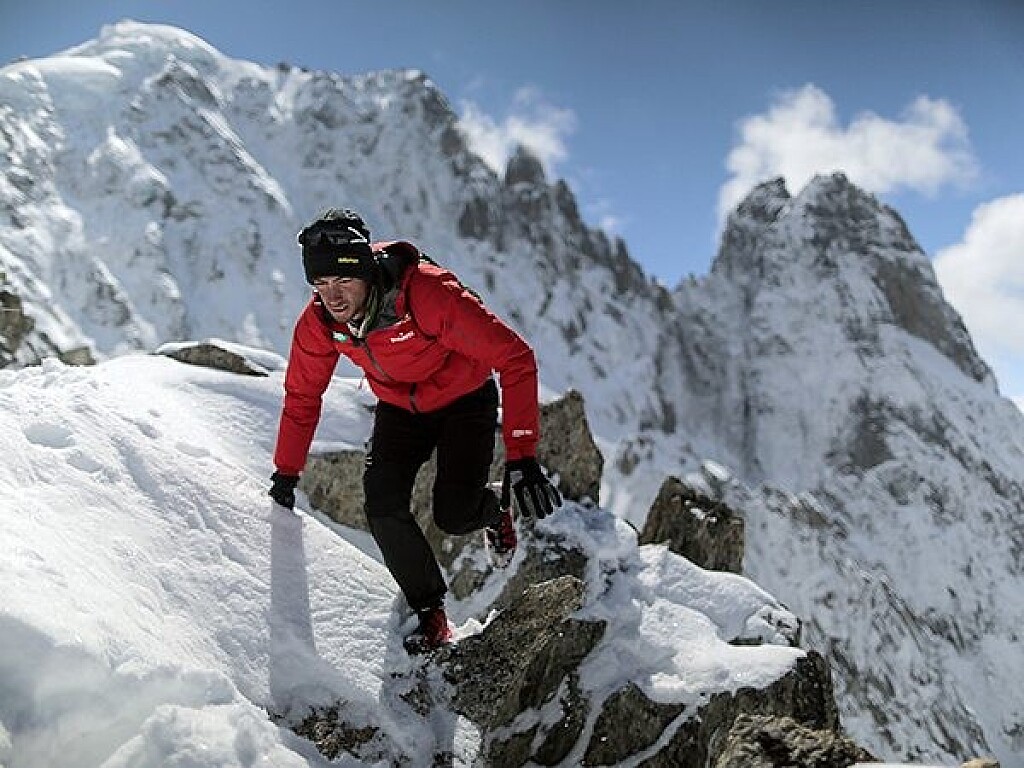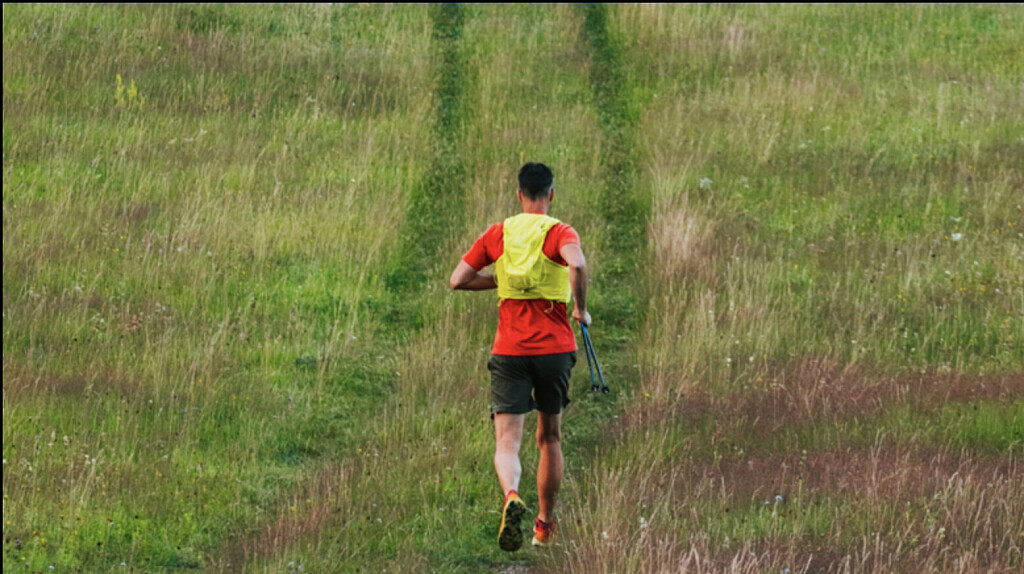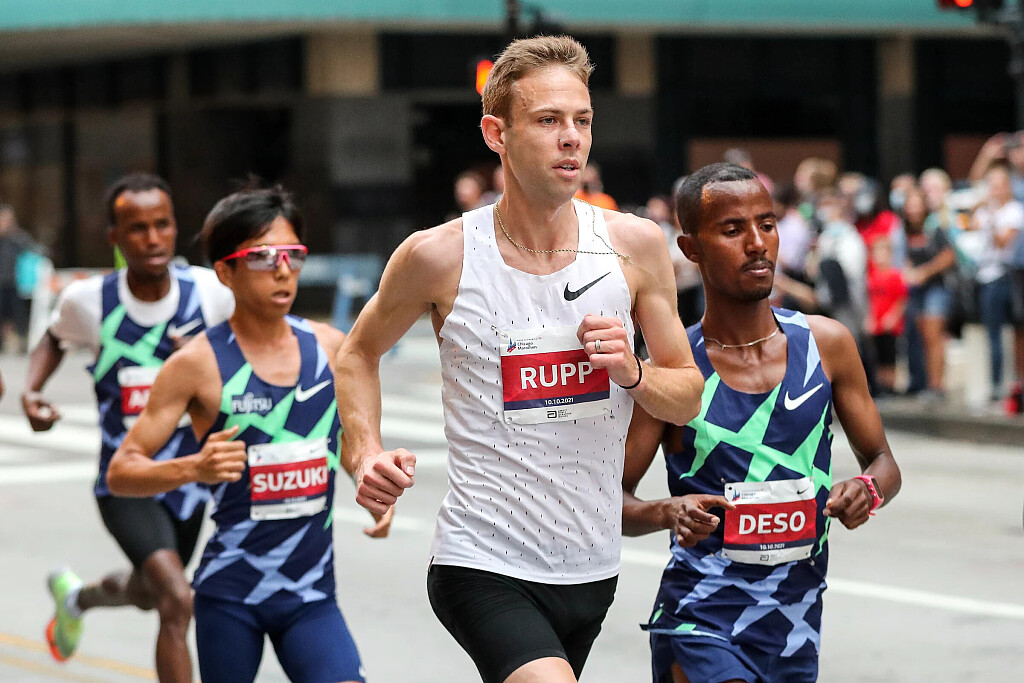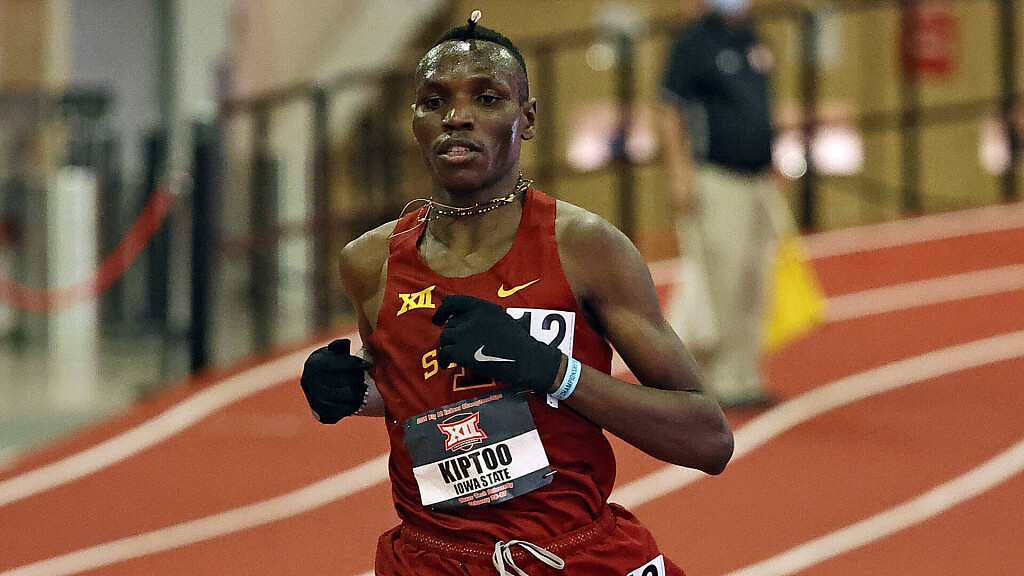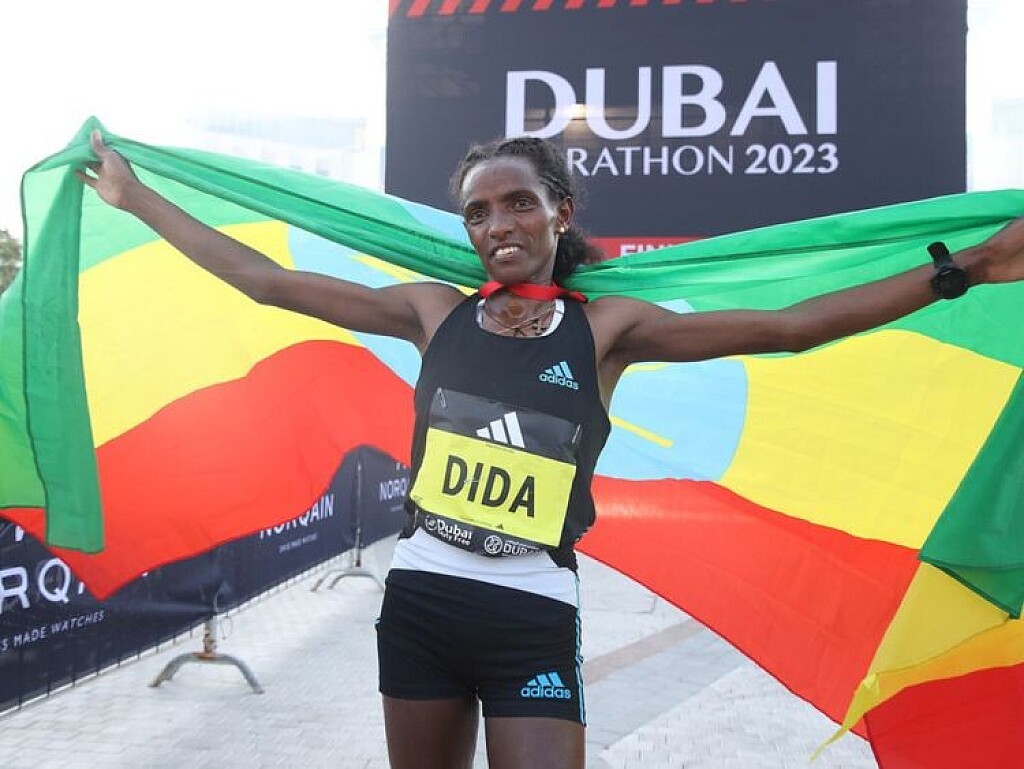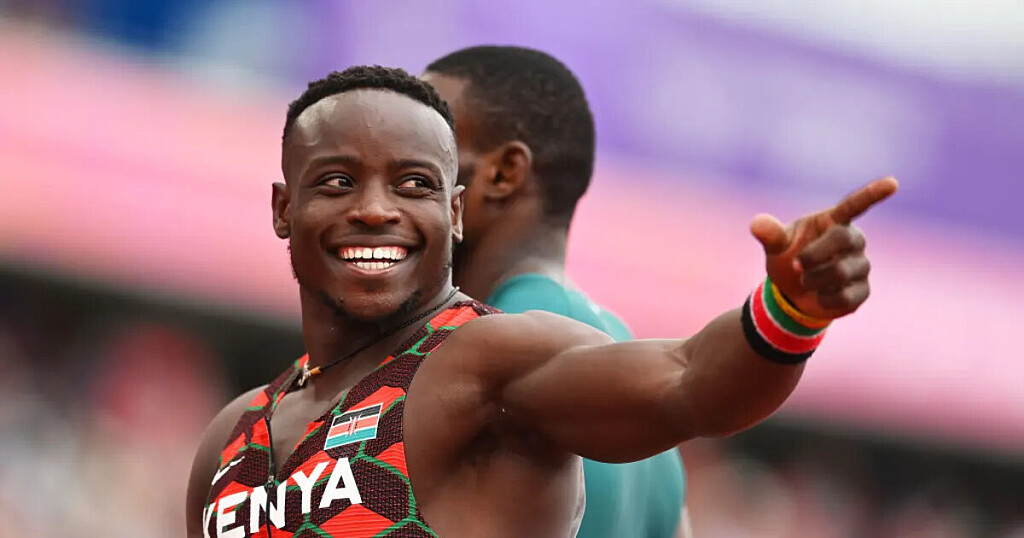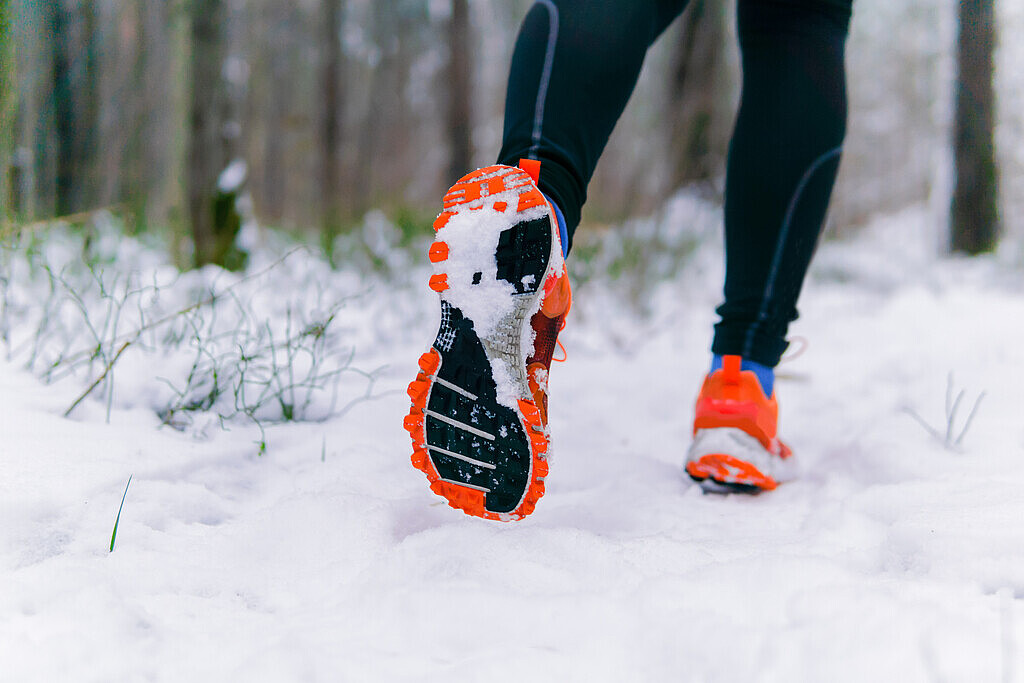Running News Daily
Top Ten Stories of the Week
12/30/2023
These are the top ten stories based on views over the last week.
Shoe tech advances is the key reason why the winning time at the Paris Olympics marathon could be under two hours
Racing shoe tech advances is helping bring the sub-2 hour marathon ever closer, but will barrier finally be broken in France?
The winning marathon time at the 1924 Paris Olympics was more than 40 minutes slower than the 2:00:35 run by Kelvin Kiptum in Chicago in 2023

With shoe technology advancing by the day, an official marathon time of below two hours is seemingly just months away.
A century after the 1924 Paris Olympic men’s marathon was won by Finn Albin Stenroos in two hours, 41 minutes and 22 seconds, next year’s Games in the same city could feature the first official sub-two hour time for the distance after 2023 saw more barriers smashed.
Kenya’s double Olympic champion Eliud Kipchoge, who dipped under two hours with his unofficial Ineos challenge run in 2019, had dragged the record down to 2:01.09 in 2022.
But in October this year compatriot Kelvin Kiptum stunned the sport when the 23-year-old took more than half a minute off the great man’s mark to post 2:00.35 in Chicago to kick-start talk of when, rather than if, a legal sub-two would arrive.
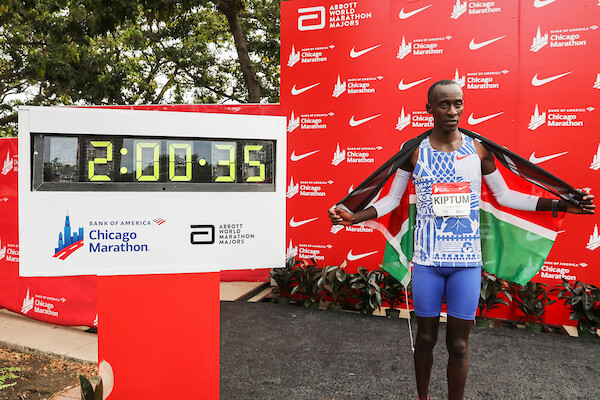
That came two weeks after Ethiopia’s Tigst Assefa took more than two minutes off the women’s record with 2:11.53 - a time that would have been the men’s world record until 1967.
Talented and hard working though both champions are, the key component of their incredible times was unquestionably the latest developments in shoe technology that has made comparisons with earlier eras, even last decade, largely meaningless.
(First photo) Adidas CEO Bjorn Gulden, holds a shoe worn by Ethiopia’s Tigist Assefa when she set a new women’s world record at the Berlin Marathon.
Kipchoge’s performances opened the world’s eyes to the condensed foam, carbon-plated super shoes Nike claimed could increase running efficiency - the amount of oxygen consumed per minute - by 4 per cent.
Soon, every major race start line was awash with the trademark dayglow Nike Vaporfly and Alphafly.
Although the sport’s governing body, World Athletics, tried belatedly to rein things in with their stack height regulations in 2020, the genie was out of the bottle and it did not take long for other companies to close the gap.
Assefa ran Chicago in a new Adizero Adios Pro Evo 1 shoe, retailing at just under US$500. It conforms to the 4cm height rule but, at 138 grammes, weighs about 40 per cent less than any previous Adidas racing shoe.
The latest theory around the shoes is that the carbon plates have only a limited effect and it is the “barely-there” weight, combined with the energy-return cushioning and “rockers”, that prevents the fatiguing impact of previous thin-soled “racing flats” and allows athletes to maintain their optimum speed for longer.
Adidas says its newest shoes are “enhanced with unique technology that challenges the boundaries of racing” and highlight a foot rocker that it claims triggers forward momentum and further enhances running economy.
Nike is not about to hand over the baton just yet, however, as Kiptum achieved his record in yet another prototype, the Alphafly 3, also worn by women’s Chicago champion Sifan Hassan, who took almost five minutes off her personal best with the second-fastest women’s time ever of 2:13.44.
It was a similar story in several athletics events at the 2021 Tokyo Olympics where a combination of a fast track and revolutionary spikes produced some jaw-dropping records.
Such is the sport’s seeming obsession with times rather than races that the pressure to keep installing faster tracks and allowing ever more beneficial shoes shows no sign of abating.
The Paris Olympic athletics programme will undoubtedly produce magical moments, but it is photographs of athletes posing by their world record time on the finish line clock that usually claim the front pages.
(12/25/23) Views: 173Kilian Jornet’s 4 secrets to winter training
For iconic trail runner and mountaineer Kilian Jornet, the colder months aren’t a pause in training but rather call for a strategic shift that all runners can learn from.
Nestled in the Romsdalen mountains of Norway, Jornet’s off-season training offers a masterclass in balance, recovery, and preparation for the upcoming challenges of spring and summer racing. In a recent blog post with COROS, Jornet shared his off-season regime, and how you can apply it to your training.

1.- Diversify your training arsenal
Jornet’s usual running playground is snow-covered during winter, prompting a shift from high-mileage running to ski mountaineering and ice climbing. This diversification serves as a reset for both body and mind. While running is an impact activity that can cause some repetitive strain, winter activities like skiing offer endurance benefits without mechanical stress.
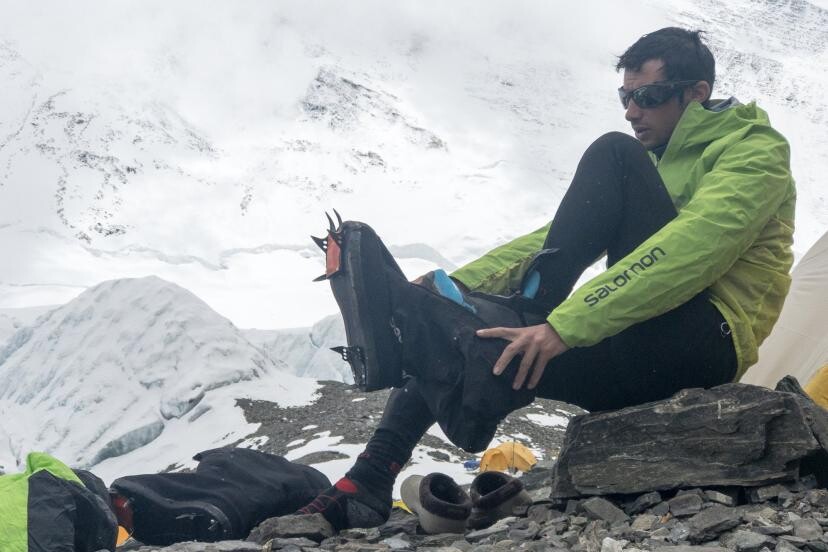
Embracing variety in your training will allow you to build and maintain a robust aerobic base, while minimizing the risk of injury. Trying new things this season, like a cross-country ski lesson, strapping on some snowshoes or spending some time on an indoor bike will have long-term benefits, and you may find a new sport you love.
2.- Focus on the downhill
For Jornet, downhill speed and strength are paramount for ultrarunning success. Instead of relying solely on running for quad strengthening, he incorporates downhill skiing during the winter. This deliberate strategy ensures that his legs are accustomed to intense eccentric loads without the constant impact on muscles and bones. The muscle memory cultivated during cross-training seamlessly integrates into running when the season shifts. Try a downhill workouts to get used to (down) hilly fun.
3.- Prevent injuries for the long-term
By embracing activities with different mechanical loads than running, Jornet not only aids short-term recovery but also secures long-term benefits. Jornet’s temporary departure from a running focus in the summer of 2023, due to injuries, emphasized the importance of cross-training. Make a strategic choice to switch it up so that you can run for as many years as you want.
4.- Enjoy a mental break
While the winter training regimen is robust, Jornet acknowledges the necessity of a mental break. The off-season becomes a time to recharge mentally, allowing a return to spring training with renewed confidence and positivity. Jornet emphasizes the value of a balanced mental state during the winter training grind and recognizes the importance of mood in adaptation. Focus on recovery days and practice fuelling well during the off-season. Try one of the recipes Jornet and his partner, Emelie Forsberg, love to make.
Jornet’s winter training philosophy isn’t just for elite athletes— it holds lessons for all who seek to balance intensity, recovery, and a focus on mental health and a connection with the changing seasons. His training regime can be used as inspiration for regular runners to explore the transformative power of a well-crafted off-season strategy.
(12/23/23) Views: 119Keeley Milne
What Will Health and Fitness Look Like in 2024? We Asked Some Experts.
Adults will take recreational cues from their children, “unprocessed” will become a marketing asset, and rodents will show us the way to eternal life.
It’s almost a wrap for 2023, which means it’s time for our annual list of fitness predictions for the coming year. As in the past, we reached out to several experts to ask what we should expect for 2024. Beyond forecasting a specific food fad or workout craze, these predictions are often about identifying a subtle shift in the zeitgeist when it comes to how we think about what it means to live well.

Over the years, a consistent theme has emerged: How do we embrace advances in science and technology without losing sight of the tried-and-true, or letting them corrupt an essential humanist element? This question has probably never been more urgent than in our era of accelerated machine learning. When I recently spoke to my friend Scott Lachut, a longtime veteran of the trend forecasting industry, he told me that he’d come across a few examples of gyms that offer AI-based trainers with different “personalities.” Depending on whether you wanted to be coddled or subjected to dominatrix-style abasement, your virtual coach would be able to accommodate your needs.
“I personally think that generative AI being able to offer personalization at scale is going to be pretty interesting, if a bit Big Brother-y,” Scott told me. This reminded me of that frequently cited proverb of uncertain origin, “May you live in interesting times.” Depending on your source, the line is either meant as a blessing, or a curse.
My guess is that “ultra-processed” will be the food term of the year as everyone who cares about what they eat realizes that they need to cut down on foods that are industrially produced, use industrially extracted ingredients, and are designed to replace real foods and be “addictive.”
Much evidence associates these foods with overweight and obesity-related chronic diseases (heart disease, type 2 diabetes, etc), and overall mortality. One clinical trial supports the addiction hypothesis; it demonstrates that people who eat ultra-processed diets as opposed to matched diets based on minimally processed foods take in many more calories. I would not be surprised to see non-ultra-processed products starting to be advertised as such.
—Marion Nestle, professor emerita at New York University and author of the Food Politics blog
Sometime in 2024, we will learn of an epochal breakthrough in the quest for longevity. There will be a molecule that, when given in sufficient quantities to certain transgenic rodents, extends life by an amount that, when extrapolated from rodent-years to human-years, is statistically significant. Human trials will be planned; venture capital will flow like red wine; extremely long podcasts will be recorded. Obscure herbs that contain molecules distantly related to the breakthrough will flood the Internet. The global wellness market will reach a projected size of $6.6 trillion. Life expectancy in the United States will continue its decade-long decline.
–Alex Hutchinson, Outside Sweat Science columnist and author of Endure: Mind, Body, and the Curiously Elastic Limits of Human Performance
For too long, runners at the back of the pack have felt left behind by the larger running community. Few running clubs provided support for the 12-minute (or more) mile crowd, and many race organizers packed up water stations or ran out of medals before the slowest runners crossed the finish line. Thankfully, this is beginning to change, largely due to the work of slow-running activists like Martinus Evans, founder of the Slow AF Run Club, who published a book by the same name last summer. As Evans’s star has risen, so has support for his cause: The virtual club is now more than 18,000 members strong, and runners around the world have been inspired by his calls for greater inclusivity in fitness. The past few years have also seen the launch of several in-person pace-inclusive running groups.
As more slow runners feel welcome at running events, the average course time for many major races, including the New York City Marathon, is slowing down. “The stigma of being a back-of-the-pack runner is slowly going away,” the marathon’s race director, Ted Metellus, recently told The Washington Post. Most of us face plenty of barriers to simply lacing up sneakers and finding the time to move. I’m hopeful that, for growing numbers, speed will no longer be one of them.
—Danielle Friedman, journalist and author of Let’s Get Physical: How Women Discovered Exercise and Reshaped the World
Amidst the increasing chaos and tumult of everyday life, people will crave stability and simplicity from their health and fitness routines. There will never be a shortage of those who are into the latest fad or bro-science gimmick, but it seems more and more people are becoming tired of this. There is already so much noise in the world, and one’s health and fitness approach need not contribute to it.
I suspect it’ll increasingly be back to basics—because not only do basics work, but they aren’t so exhausting. Out with the social media hype speeches from $8,000 cold plunges at five in the morning, in with a morning pot of coffee or tea, reading a book, and 30 to 60 minutes of movement that you can do consistently. The former sounds cool. The latter is the path to actual health and well-being.
—Brad Stulberg, executive coach and author of Master of Change: How to Excel When Everything is Changing, Including You
Social media can have an unfortunate flattening effect—it can feel like every person on your feed wants the exact same thing. Angels Landing is the only hike worth doing, Yosemite the only public land worth visiting, and the six big-city marathon “majors”—New York, Boston, Chicago, London, Berlin, and Tokyo—are the only footraces worth contending. Interest in these races has boomed (Boston qualification keeps getting harder, lottery applications to Chicago have more than doubled over the last decade) even as smaller marathons stagnate or even decline. Something has to give, just as a matter of pure arithmetic, so perhaps this will be the year of flexing on your followers with a PR in your local grassroots 10K.
–Chris Cohen, deputy site editor and wellness editor at GQ.com
Everyone is lonely. We are starved for human connection and contact. We are starved for reasons to go outside. We are all withering and calcifying, physically. The natural answer is, of course, stay with me, PvP zones. What is a PvP zone, you ask? PvP zones, in open-world video games, are designated areas where players are able to directly interface with—OK, attack—one another. I do not mean for there to be actual violence, obviously. But a place for adults to engage in relatively unstructured play? We need it, now more than ever.
I see you shaking your head, but that only proves how badly you need to engage with your fellow humans in a PvP zone. You may think I’m joking, but I am entirely serious. I take my dog to the dog park, and then I sit there roiling with jealousy for 45 minutes. How is it that we have a place for her, a dog, to get up to shenanigans with her fellows, while the only acceptable thing for me to do outside is sit on a bench? It’s preposterous.
I, we, have basically all the same needs as a dog for play and exercise and, most importantly, fun with others. We are grown adults. We should, theoretically, be allowed to do whatever we want. Why is “goofing around in parks” the provenance of only dogs and children? Why are we not allowed to do some good old-fashioned light roughhousing, to chase one another in and out of trees, just because it’s fun and funny only if you, very crucially, don’t think about why or what for at all? If you are thinking “You’re just describing jiu jitsu class, or recreational softball”: sort of. But the most crucial aspect of the PvP zone is that it’s structureless, a place where no one loses and skill doesn’t matter.
I don’t think anyone would argue that many of us think entirely too much now. Perhaps the solution to all of our ills is to just designate an area of our parks where it is acceptable to go up to another person you don’t know and say “tag, you are it” and then run away. PvP zones. It could, and should, and by my estimation will, happen.
—Casey Johnston, creator of the She’s a Beast newsletter
A combination of sustainable lifestyle changes and personalized solutions will reimagine sick care. I think health spending will shift from reactive to proactive care in the coming decades. More movement and healthy food should be the first line of defense. Building on that foundation, health trackers, preventative diagnostics, and coaching/care platforms will help save the U.S. healthcare system trillions of dollars in the long run.
—Anthony Vennare, co-founder of the Fitt Insider newsletter
People have come around to the fact that shorter workouts still have benefits (see exercise snacks!) and that high intensity workouts do not have to be long. What we are going to see next is the swell of lower intensity workouts having a lap in the spotlight. More men taking Pilates, people walking, lower intensity steady state exercise (Zone 2 and otherwise), and wanting to feel better instead of just being fitter.
As millennials’ life responsibilities start to pile-up as this cohort of individuals who were born into the wellness boom continue to age, the wear and tear that intense workouts have on the body will rear its head. Additionally, people are starting to understand more of the science behind benefits of lower intensity steady state work, especially for the heart. The “soft life” mindset will show up in the gym.
—Joe Holder, founder of The Ocho System and GQ wellness columnist
We’re at a point where I think we’re going to have to redefine how we see health and wellness in a number of ways. On the one hand, we’re going to have to reckon with the environment we’ve created. There’s an increasing acknowledgement that having phones everywhere, at all times, is causing some disastrous mental health in teens and young adults. And for the rest of us, the impact of neglecting green space, parks, walkable areas, and so much more in our day-to-day living is setting us up to fail.
On the other hand, the promise of medical discoveries like GLP-1 drugs bring much needed avenues for meaningful change. The first legitimate drug for obesity will force us to wrestle with how we see health, from both a personal and medicalized approach. My hope is that we find ourselves wrestling with the nuance in the middle, finding ways to utilize medical breakthroughs, while creating an avenue for long-term sustainability by making our environment invite healthier actions.
—Steve Magness, track and field coach at the University of Houston, coauthor of The Passion Paradox and Peak Performance, and cofounder of The Growth Equation
Growing up in an Asian-American family, the greatest compliment anyone in my family could give about a dessert was, “it’s not too sweet.” This aversion to cloying sweetness, which was hard coded into my palate from a young age, has caught on with the mainstream. Starting with long overdue realignment of the soda industry toward sparkling water as the hero, to the continued rise in popularity of Asian food with its greater emphasis on savory over sweet, to the all-too-common experience of asking your server for a wine recommendation that’s “on the drier side,” sweetness continues to be marginalized.
But while sugar has been demonized for decades from a nutritional standpoint, eaters are now reducing sugar intake for purely taste reasons, not just health ones. Even people who aren’t militant about avoiding sugar are moderating it because they want to actually taste their food, not have their taste buds smothered in a wave of sweetness. And with rising negative sentiment around the healthfulness of artificial sweeteners and the general affinity for more unadulterated foods, diets in 2024 and beyond might not only continue to reduce sugar levels, but whatever small amounts of sugar they do eat will come from natural sources, not synthetic ones.
—Mike Lee, Founder of The Future Market, a trend forecasting company for the food industry
You used to have to go to a sterile clinic to get a longevity boost with Vitamin IV drips and stem cell therapy but resorts are now partnering with longevity centers to offer onsite treatments. Guests at Four Seasons Resort Maui at Wailea can get a poolside NAD+ IV drip. Katikies Kirini in Santorini now has an outpost of a ZOE Bio Regenerative Wellness Clinic where guests can get live blood analysis. And Six Senses Ibiza has partnered with biotech company RoseBar to offer guests full diagnostic testing that can inform biohack treatments like localized cryotherapy.
—Jen Murphy, Outside contributor and longtime fitness columnist for the Wall Street Journal
I think in 2024 sotol will take over from mezcal as the “it” cocktail. Cheers!
(12/25/23) Views: 117Outside Online
Galen Rupp set to Run Houston Half
Earlier today, the organizers of the Aramco Houston Half Marathon sent out a press release that they’ve secured two big names for their upcoming race, which takes place on January 14 (press release appears below this article). Hellen Obiri of Kenya, the reigning Boston and NYC Marathon champ, will headline the women’s field while American star Galen Rupp will be in the men’s field. It will be both runners’ first appearances in the Houston Half.
With Rupp entered, it’s possible all of the drama of how many spots will the US men get for the Olympic marathon could finally, officially come to an end. LetsRun.com has calculated that if Rupp runs 60:47 or faster in Houston, he will vault up to #64 on to the Road To Paris list (assuming nothing changes on the list before then — the Dubai Marathon is January 7). If Rupp holds that position until January 30, the US would be guaranteed three men’s Olympic marathon participants when the US Olympic Trials take place on February 3 in Orlando.
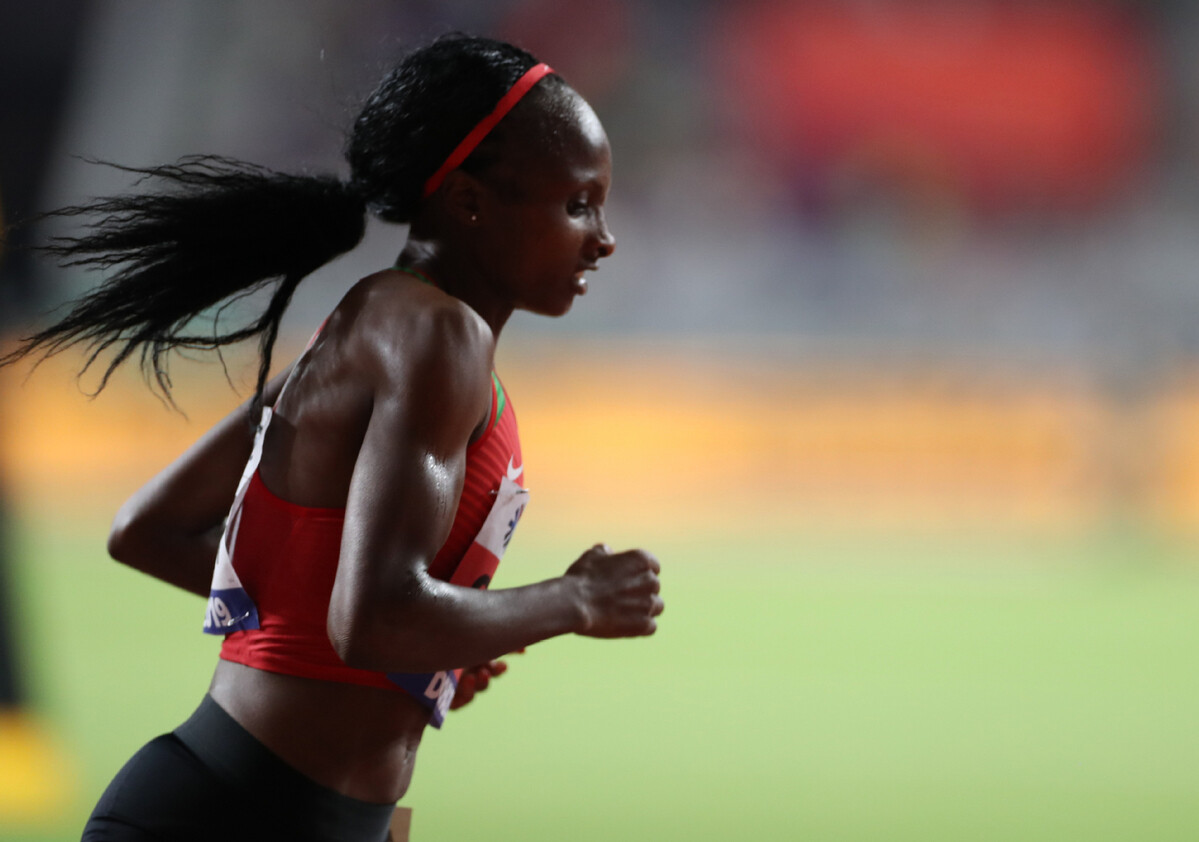
They wouldn’t need to wait until April 30, when spots #65-80 on the Road to Paris become eligible for the Olympics.
If Rupp runs faster than 60:02 in Houston, he’d move up to #63 on the current Road To Paris list.

Rupp likely wouldn’t need to run 60:47 to move up to #64 as there are bonus points awarded for a top-6 finish. The Houston Half is considered to be a Category B race so there are 10 points for 1st, 7 for 2nd, then 5-3-2-1 for places three through six. At Rupp’s level, one bonus point is worth roughly 1.5 seconds in the half marathon (10 bonus points is 15 seconds).
For example, if Rupp was second in 60:58, it would be the equivalent of running 60:47 with no bonus points. Last year, however, 60:58 was third in Houston, and in that case Rupp would be ranked #65 on the current rankings.
Elite athlete headliners look to be one for the record books even before the race begins
(12/22/23) Views: 112Robert Johnson
The inspiring story of US-based Wesley Kiptoo using athletics to escape poverty
Wesley Kiptoo is a true testimony of how athletics can transform the life of an individual.
Wesley Kiptoo, 24, left his home in pursuit of changing his fortunes and found refuge in athletics which has been a saving grace to him and his community.

The father of two knew that he had the talent and he developed it at the Transcend Academy–a school founded and run by former Boston Marathon Champion, Wesley Korir.
Korir helped Wesley find a new home in the United States where he moved in 2018 to attend Colby Community College. It was there that he met his now wife, Maribel.

“For me, running is about self-belief. The struggles I’ve been through in my life give me strength when I race.
"I run for something bigger than myself. My mission to run is because of my family…it is very large because my father had three wives. We are 12 in number and I am the second-last born and no one has been employed.
"I decided to run so that I can give them a better life than the one they were living,” Kiptoo said in a video clip shared by his management, Hoka Naz Elite Athlete group.
He added that every time he runs, his family gives him the morale that one day, he will be a household name. Ben Rosario, the head coach of his management, also stands by the words that Kiptoo will be a great athlete since he has many features that make him stand out.
Meanwhile, Kiptoo returned home from the USA this year and received a grand welcome. His life has now changed and he was able to make an impact on children and elders.
He made visits to different schools, talked to the youngsters, and also hosted a party for his family and community.
He attested that life can be difficult for people in the village but when they come together, many things work out for their good.
“I left this village five years ago and went to America for two things, education and running. That’s what brought me back, I want to encourage the same thing.
"We need to encourage our children in their pursuits. When we come from here and get successful, it’s not just for us, it’s for everyone,” Korir said.
(12/22/23) Views: 109Abigael Wuafula
Ethiopia’s Dera Dida set to defend Dubai Marathon crown
Dubai: Less than 10 months after winning the 2023 Dubai Marathon, Ethiopian star Dera Dida has confirmed she will return to the UAE to defend her Dubai crown on January 7.
Earlier this year, Dida — wife of former Dubai Marathon winner and Marathon World Champion Tamirat Tola — stormed through with two kilometres remaining to take the women’s event in 2h:21:11 at Expo City Dubai, while her brother-in-law Abdisa Tola made it a unique family double by clinching the men’s title.
But while Abdisa misses out on a Dubai title defence through injury, fellow adidas runner Dera Dida will be back on the start line on January 7 as she bids for a second successive title in the UAE, this time over the fast and flat roads around the iconic Burj Al Arab and Jumeirah Beach Road area.

Familiar ground
It’s familiar ground for Dida who competed over the route in both 2018 and 2020 finishing seventh and fifth respectively. It is the first time since 2020 the event will be back at what has long been seen as its natural “home” and Dida will start as firm favourite following one of the most successful years of her running career.

In 2023, she recorded personal bests at both 10,000m and Half Marathon, while seven months after winning in Dubai, the 27-year-old Ethiopian lowered her marathon personal best to 2:19:24 in Berlin and is looking forward to maintaining her upward momentum over the classic distance.
“When I took the lead in Dubai, I was sure I’d win,” said Dida, a two-time Ethiopian National Champion at 5,000 and 10,000m and a two-time World Cross Country Championship silver medallist. “It was a wonderful race and, of course, it was very emotional when I realised Abdisa had also won.”
Remarkable achievement
Dubai Marathon race director Peter Connerton added: “It is always a great pleasure to welcome back our former champions. To have two family members win was a remarkable achievement and we are delighted to have Dera Dida return to Dubai for the first big international marathon of the new calendar year.”
Runners who would like to follow the elites and who have still not registered for the three-race event, can sign up for the Marathon, the 10km and the 4km Fun Run at dubaimarathon.org.
(12/22/23) Views: 106Hellen Obiri confirms next race as she gears up for the Olympic Games
Hellen Obiri has announced her next assignment as she prepares for the Olympic Games in Paris, France.
Reigning New York City Marathon champion Hellen Obiri has been confirmed for the Houston Half Marathon in January 14, 2024.
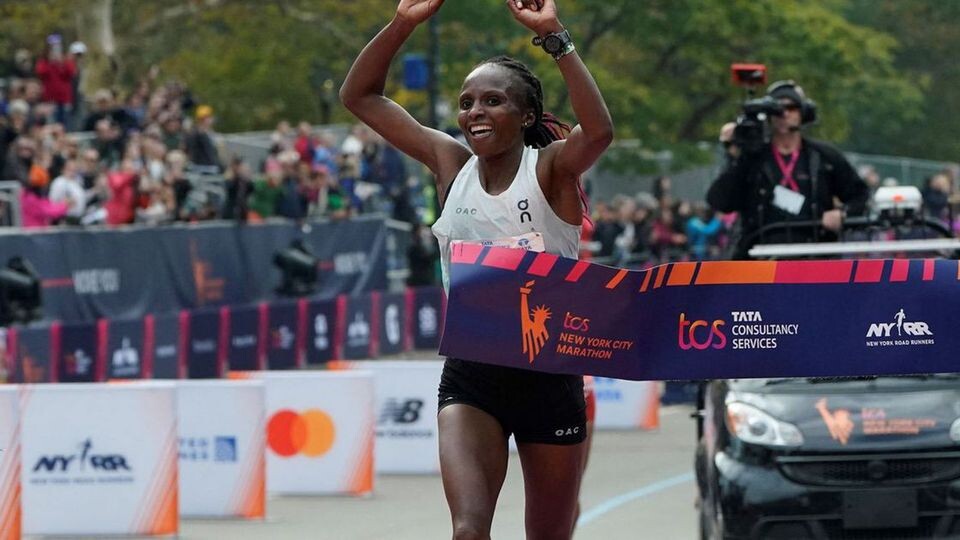
The race organizers made the announcement on Friday, December 22, explaining that Obiri and two-time Olympic Games medalist Galen Rupp will headline the elite fields.
Obiri will be hoping to make the cut to the Olympic team for Kenya and make an impact and with enough preparations, she is sure of a medal.

She has expressed her interest in winning a gold medal at the Olympic Games and she might stun the world in Paris, France.
During the announcement, Obiri said: "I want to run the marathon at the Olympics in Paris so to run some half marathons is an important part of my preparations."
Obiri has enjoyed a glamorous 2023 season, winning all the two marathons she competed in. The two-time World 5000m champion started the season with a win at the Boston Marathon and completed her season with victory at the New York City Marathon.
She also competed at the Ras Al Khaimah Half Marathon and the United Airlines New York City Half Marathon and won the two races.
On his part, Rupp will be hoping to test himself ahead of the Olympic trials. "The focus is on the trials and making the Olympic team but with Houston being three weeks out I see it as the perfect opportunity to test myself and just make sure I am on track to where I want to be,” he said.
(12/22/23) Views: 104Abigael Wafula
Ferdinand Omanyala shares secret on how to achieve top-three finish in a race
The African record-holder has shared a tip on how an athlete can make it to the podium.
Reigning Commonwealth Games 100m champion Ferdinand Omanyala has explained what it takes to get on the podium of any assignment as an athlete.

The 27-year-old has been the epitome of hard work, sharing snippets of his training as he gears up for the World Indoor Championships and the Olympic Games among other events.
Sharing a training video on his X (Twitter) handle, the African record holder captioned it saying: “Consistency to performance is what pressure is to diamond....it takes lots of work across many training variables to finally step on that podium!
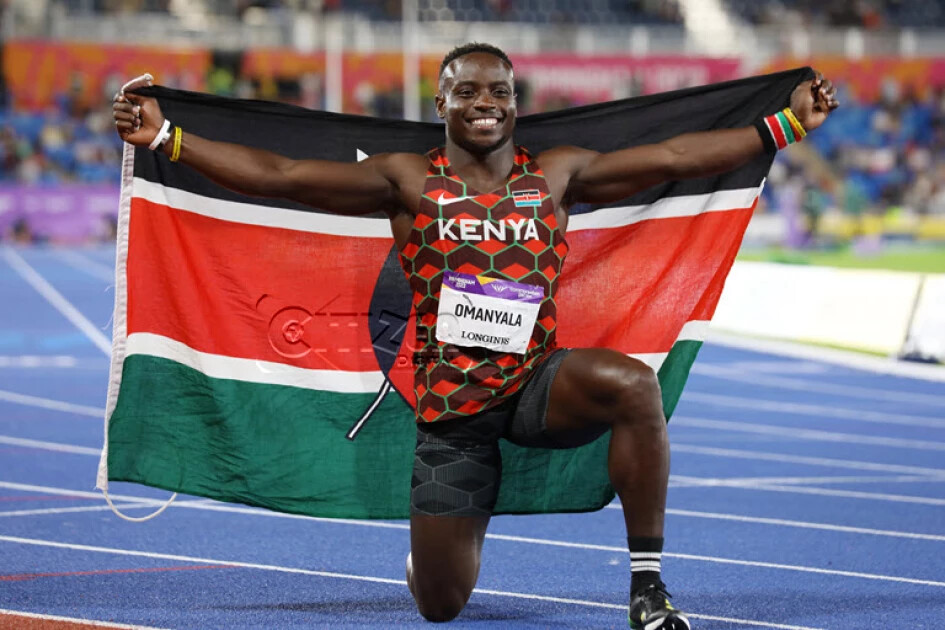
"The most important thing is getting back up after a fall. If it does not kill you it will make you stronger.”
Meanwhile, the African champion has enjoyed a great 2023 season, with the only major setback being the World Championships in Budapest, Hungary.
At the global showpiece, Omanyala was off to a good start in the heats and semifinal but faltered in the final where he ended up finishing seventh.
However, he recorded big wins including becoming the first Kenyan to win the Diamond League Meeting in the 100m in Monaco. Omanyala also finished third at the Prefontaine Classic, the Diamond League Meeting final.
He also ended the season as the fourth-fastest sprinter in the world behind triple World champion Noah Lyles, Christian Coleman, and Zharnel Hughes.
(12/23/23) Views: 103Four ways to be more consistent in 2024
We all want to take the fast track. When it comes to achieving health, well-being and peak performance, the allure of quick fixes and heroic efforts is undeniable. But in a world where instant results are often glorified, embracing a consistent and sustainable journey can be the key to long-term success. Brad Stulberg, performance coach and author of Master of Change: How to Excel When Everything Is Changing – Including You, outlines a few essential practices to follow to rack up consistent repeated gains in 2024, and beyond.
1.- Avoid pushing to extremes

“If you go for broke you often end up broken. If you swing for home runs you often end up striking out. But if you just put the ball in play—over and over again—good things tend to happen,“ Stulberg shares on his website. There’s a common misconception that pushing yourself to the extreme is the only way to make significant progress. However, as seen in the story of the late Ron Hill, who ran every day for more than 52 years, sustainability is the true secret to lasting success. Hill’s consistency, rather than sporadic extreme efforts, allowed him to achieve an unparalleled feat. While social media often showcases wild workouts, it’s crucial to recognize that sustained efforts (even if they aren’t flashy) yield better results in the long run.
2.- Progress is not linear

In a world obsessed with visible progress, many individuals find themselves burning out not just after setbacks but also following significant achievements. The trap lies in expecting continuous visible growth, especially when aiming for marginal gains becomes challenging. The key to longevity is reframing your work as an ongoing practice, measuring the overall process and allowing progress to naturally unfold as a result of consistent commitment. “The goal has got to shift from visible progress to sustained and wise effort,” Stulberg says.
Progress is not always straightforward, and even though you may notice initial rapid improvements, the path becomes more incremental over time. Understand and appreciate this non-linear trajectory. Patience and enjoyment of the process are key to allowing progress to unfold in a unique, non-linear way.
3.- Build your foundation
“There is no such thing as an overnight breakthrough,” says Stulberg. Research suggests that hot streaks, or periods of exceptional performance, are unpredictable and often emerge from a foundation of consistent work. Building a strong, sturdy base is key to growth and strong performance, and what appears to be a sudden breakthrough is built on a history of incremental improvements. Progress is a gradual process that requires dedication, effort and time.
4.- Show restraint
Restraint can be a powerful tool as you pursue consistent progress. Knowing when to stop, even when you feel good, is the secret to maintaining a rhythm over an extended period. Sustainable progress requires a balance between giving your best on any given day and saving energy for the long haul. Recognize the difference between short-term intensity and the long-term commitment needed for sustained success. “Sustainable progress, in just about every and any endeavor, requires stopping one rep short, at least on most days,” says Stulberg.
(12/25/23) Views: 93Keeley Milne
Try these surge sets to wake up your legs this winter
If you’re already getting tired of the monotony of off-season winter runs, this surge set workout is just what you need to give yourself a boost. Short and sweet, this fun session allows you to ditch the GPS watch and run by feel–perfect when cold conditions or snowy sidewalks prevent you from hitting a consistent pace.
The goal of this workout is simple: get your legs moving and your heart rate up a bit without overdoing it during the off-season. You should feel like you’re working hard, but recover quickly between intervals, and you should be able to get a little faster as the intervals get shorter. We highly recommend turning the GPS function of your watch off for this one and just run by feel, especially if the weather is bad.
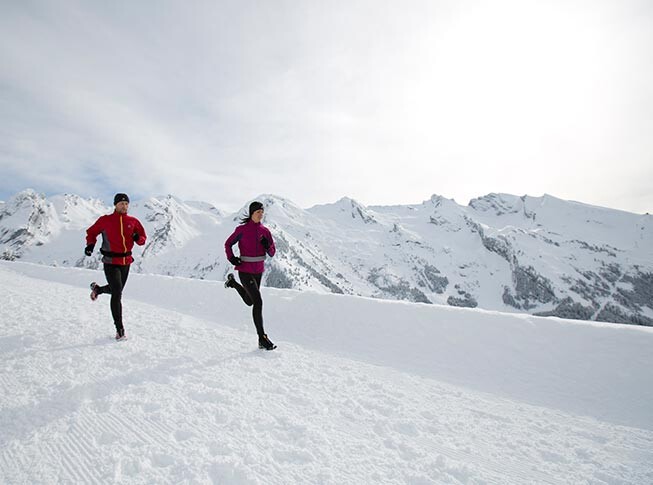
The workout
If a steady diet of slow, easy runs is starting to make you feel sluggish, this workout should add some pep to your step.

Warmup: 10-15 minutes easy
Workout:
2 x 90 seconds at 10K race effort/90 seconds’ easy jog recovery
4 x 60 seconds a little faster/60 seconds’ easy jog recovery
4 x 30 seconds a little faster/30 seconds’ easy jog recovery
4 x 15 seconds a little faster/15 seconds’ easy jog
Cooldown: 10 minutes’ easy jog.
(12/22/23) Views: 92Brittany Hambleton





